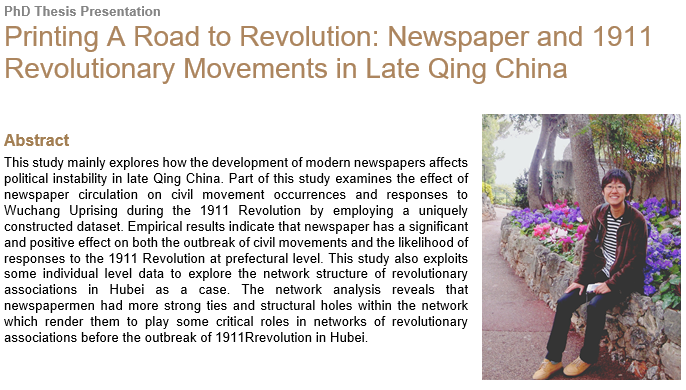Abstract
This study mainly explores how the development of modern newspapers affects political instability in late Qing China. Part of this study examines the effect of newspaper circulation on civil movement occurrences and responses to Wuchang Uprising during the 1911 Revolution by employing a uniquely constructed dataset. Empirical results indicate that newspaper has a significant and positive effect on both the outbreak of civil movements and the likelihood of responses to the 1911 Revolution at prefectural level. This study also exploits some individual level data to explore the network structure of revolutionary associations in Hubei as a case. The network analysis reveals that newspapermen had more strong ties and structural holes within the network which render them to play some critical roles in networks of revolutionary associations before the outbreak of 1911Rrevolution in Hubei.

